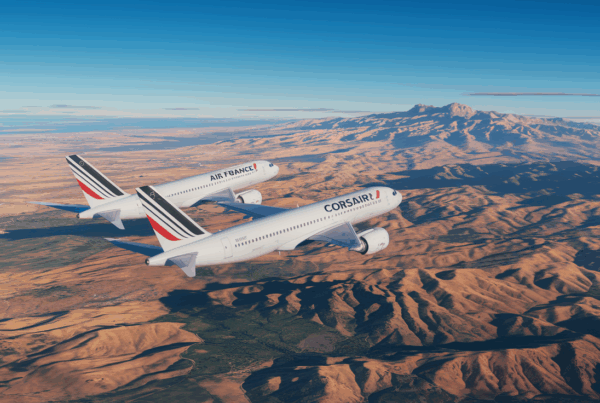Visit airliners sometimes perform a FUEL CHANGE to optimize their safety during critical phases of flight. This technical operation consists in discharging part of the accumulated fuel to reduce weight and comply with the structural constraints imposed by the manufacturer. By removing the surplus, the aircraft achieves a weight that complies with standards during landing or in the event of an emergency. Emptying also enables better management of load distribution, improving the aircraft's stability and maneuverability during descent and runway approach maneuvers. This technique ensures maximum, reliable safety.
Visit FUEL CHANGE is a controlled procedure that may seem counter-intuitive to many passengers. However, this process is essential to ensure the smooth operation and safety of airliners under certain flight conditions. In this article, we detail the technical and operational reasons behind this practice in the field ofaeronautics.
Technical and operational imperatives
When a airliner is about to land, or needs to modify its flight profile, it may be necessary to reduce the weight on board to optimize performance. Fuel draining allows you to manage weight distribution and adapt the aircraft's center of gravity for the best possible performance. safe landing. This technical process, although rare, is used when the volume of fuel carried exceeds the requirements for a specific phase of flight, or in the event of unforeseen conditions.
Managing unforeseen situations
In certain situations, weather conditions or a change in flight plan may require rapid weight reduction. For example, an emergency detour or the approach to a landing after a long flight may require immediate adaptation. In such cases, draining the fuel tank can be a solution for rapidly adjusting the payload. The main aim of this measure is to optimizebalance and to ensure the unit's manoeuvrability when faced with exceptional circumstances.
Optimizing safety and performance
Procedures related to FUEL CHANGE are part of a set of protocols designed to maintain the safety airliners. Reducing weight where necessary reduces the risk of in-flight instability and avoids potential problems associated with fuel overload. In addition to safety, this practice also helps to improve theenergy efficiency during critical phases of flight.
Aspects related to operational decisions
Every draining is the result of a meticulous decision taken by our ground and in-flight teams. The latter assess aircraft parameters, weather conditions and the time remaining before landing in real time. The process is thus integrated into an overall operations management strategy, where every action is aimed at maximizing the safety and performance of on-board systems.
Emptying procedures: how does it work?
Visit FUEL CHANGE is carried out rigorously and in compliance with strict standards. Ground crews and pilots coordinate their actions to empty part of the fuel via specially designed systems. These mechanisms, tested and validated, enable fuel to be transferred safely, while minimizing any impact on the environment and the integrity of the aircraft.
The role of maintenance and technology
Modern emptying systems are based on technological advances that guarantee trouble-free operation. On-board instruments continuously monitor fuel distribution, enabling real-time adjustment of volumes to be emptied. This technological monitoring ensures a high level of reliability and helps prevent incidents.
All these procedures reflect the rigorous application of safety standards. air safety international. Regulations and quality control require airlines to implement these measures in their operating protocols, guaranteeing optimized navigation for every flight.
Fuel change: comparative analysis
| Criteria | Explanation |
|---|---|
| Rebalancing | Return to optimal weight distribution. |
| Fuel optimization | Reduce weight to improve efficiency. |
| Emergency conditions | Adopt emergency safety measures. |
| Regulatory compliance | Respect civil aviation standards. |
| Payload | Adjust weight for optimum take-off. |
| Meteorology | Adapt to climatic constraints. |
| Engine performance | Ensure stable, efficient combustion. |
| Operational economy | Optimize flight costs on each route. |
| Security | Guarantee a safety margin in critical phases. |
On the same theme
Aviation: The new safety outlook for the sector according to the IATA 2024 report
The IATA 2024 report sheds light on the global air safety situation. Although air accidents remain rare, 2024 saw a slight deterioration compared to 2023. With seven fatal accidents out of 40.6 million...
Behind the scenes of aircraft maintenance: a rigorous and complex process for airliners
Take a fascinating behind-the-scenes look at aircraft maintenance, a field essential to the safety and efficiency of commercial airliners. Each aircraft flies between 4,000 and 5,000 hours a year, requiring rigorous and meticulous maintenance. The work of...
The problem of a smartphone lost on board an aircraft: consequences for rerouting
The loss of a smartphone on board an aircraft has a significant impact on flight operations. The absence of this communication tool increases the risks of diversion, notably by preventing access to flight information and by...







